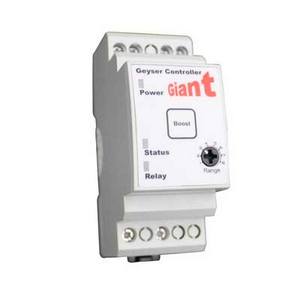Maximize Your Geyser’s Efficiency with a Practical Timer Setup
Comprehending the Common Issues Related To Hot Spring Timers for Efficient Water Heating
The reliable performance of hot spring timers is crucial for optimizing water heating effectiveness, yet users typically encounter an array of usual issues that can jeopardize efficiency. Recognizing these aspects is vital to making certain that geyser systems run at their best, welcoming a more detailed assessment of the services that can attend to these common concerns.
Usual Breakdowns

One widespread malfunction is the failing of the timer to start heating cycles. This can take place as a result of electrical issues, such as a blown fuse or malfunctioning circuitry, protecting against the timer from obtaining power. An additional typical issue is inconsistent temperature level regulation; the hot spring might stop working or get too hot to warm water sufficiently. This could be credited to a malfunctioning thermostat or sediment buildup within the container, protecting the burner.

Incorrect Timer Setups
Misconfiguration of timer settings is an usual concern that can result in considerable inefficiencies in geyser procedure. When timers are established incorrectly, they may trigger the geyser at suboptimal times, causing either inadequate home heating of water or too much power consumption. If the timer is set to turn on during peak electricity hours, it not only inflates utility costs however additionally leads to unnecessary stress on the electrical facilities.
In addition, wrong timer setups can interrupt the schedule of hot water when needed - geyser timer. An inadequately configured timetable may leave homes without warm water during height use durations, causing inconvenience and irritation. On the other hand, constant procedure due to misconfigured timers can lead to getting too hot, increasing and harming the hot spring upkeep expenses
Individuals need to acquaint themselves with their hot spring's home heating requirements and readjust the timer to align with their certain requirements. Appropriately configured timer setups ultimately contribute to a much more lasting and economical water heating solution.
Compatibility Concerns
Compatibility concerns can substantially impact the efficiency of hot spring timers, particularly when integrating with various home heating systems or smart home technologies (geyser timer). Several hot spring timers are made to collaborate with specific kinds of water heating systems, such as resisting burner or gas-fired systems. If a timer is not compatible with the furnace, it may not operate properly, bring about ineffective water heating or also damages to the system
In addition, as wise home technology continues to develop, the integration of hot spring timers with home automation systems can position challenges. Not all hot spring timers supply the very same degree of connectivity, which can impede their ability to connect properly with clever hubs or mobile applications. Customers might find themselves not able to regulate their hot spring timers remotely or set routines that align with various other clever gadgets in their home.
Additionally, the compatibility of geyser timers with existing electrical facilities can likewise be an issue. Variants in voltage ratings, wiring standards, and circuit configurations can result in functional problems. For explanation that reason, it is crucial to extensively examine compatibility with both the heating equipment and the home's electric system before choosing a hot spring timer to make sure ideal efficiency.
Power Supply Issues
Power supply troubles can seriously prevent the capability of geyser timers, leading to unreliable procedure and enhanced energy expenses. These problems may stem from inadequate voltage supply, inconsistent source of power, or malfunctioning electrical wiring. A geyser timer needs a secure electrical input to operate ideally; variations can bring about irregular efficiency or full failure.
In addition, wrong voltage ratings can damage the timer, making it inoperative. It is essential to guarantee that the geyser timer works with the electrical specs of the setup website. Furthermore, power rises or interruptions can interrupt the timer's programs, bring about inefficient heating cycles and unforeseen operational hold-ups.
In circumstances of consistent power supply problems, speaking with a certified electrical contractor is advisable to make sure that the electrical facilities adequately sustains the geyser timer's needs. Proper focus to power supply can boost the performance and longevity of the hot spring timer system.
Upkeep and Troubleshooting
Routine maintenance and troubleshooting are crucial for ensuring the reliable procedure of hot spring timers. Regularly clean the timer system and surrounding locations to protect against dirt buildup, which can visit this website conflict with its procedure.
If problems occur, begin troubleshooting by resetting the timer to its default settings. Validate the power supply to make certain the timer is obtaining sufficient voltage.
In addition, consider organizing expert like this inspections every year to attend to possible issues proactively. This approach can extend the life-span of the geyser timer and optimize its effectiveness. By focusing on upkeep and effective troubleshooting, users can minimize common issues and make sure constant efficiency from their hot spring timers.
Conclusion
In verdict, acknowledging and addressing the typical concerns connected with hot spring timers is essential for optimizing water heating efficiency. Timer breakdowns, inaccurate setups, compatibility challenges, and power supply troubles can dramatically impact performance.
The effective functioning of hot spring timers is necessary for enhancing water heating effectiveness, yet customers usually come across a variety of common concerns that can compromise efficiency. When timers are set inaccurately, they may turn on the geyser at suboptimal times, resulting in either insufficient home heating of water or too much energy usage.Compatibility issues can significantly influence the performance of geyser timers, particularly when incorporating with various home heating systems or wise home innovations. Several hot spring timers are designed to work with specific types of water heating units, such as resisting heating aspects or gas-fired systems.In conclusion, identifying and resolving the usual issues linked with geyser timers is necessary for maximizing water home heating efficiency.